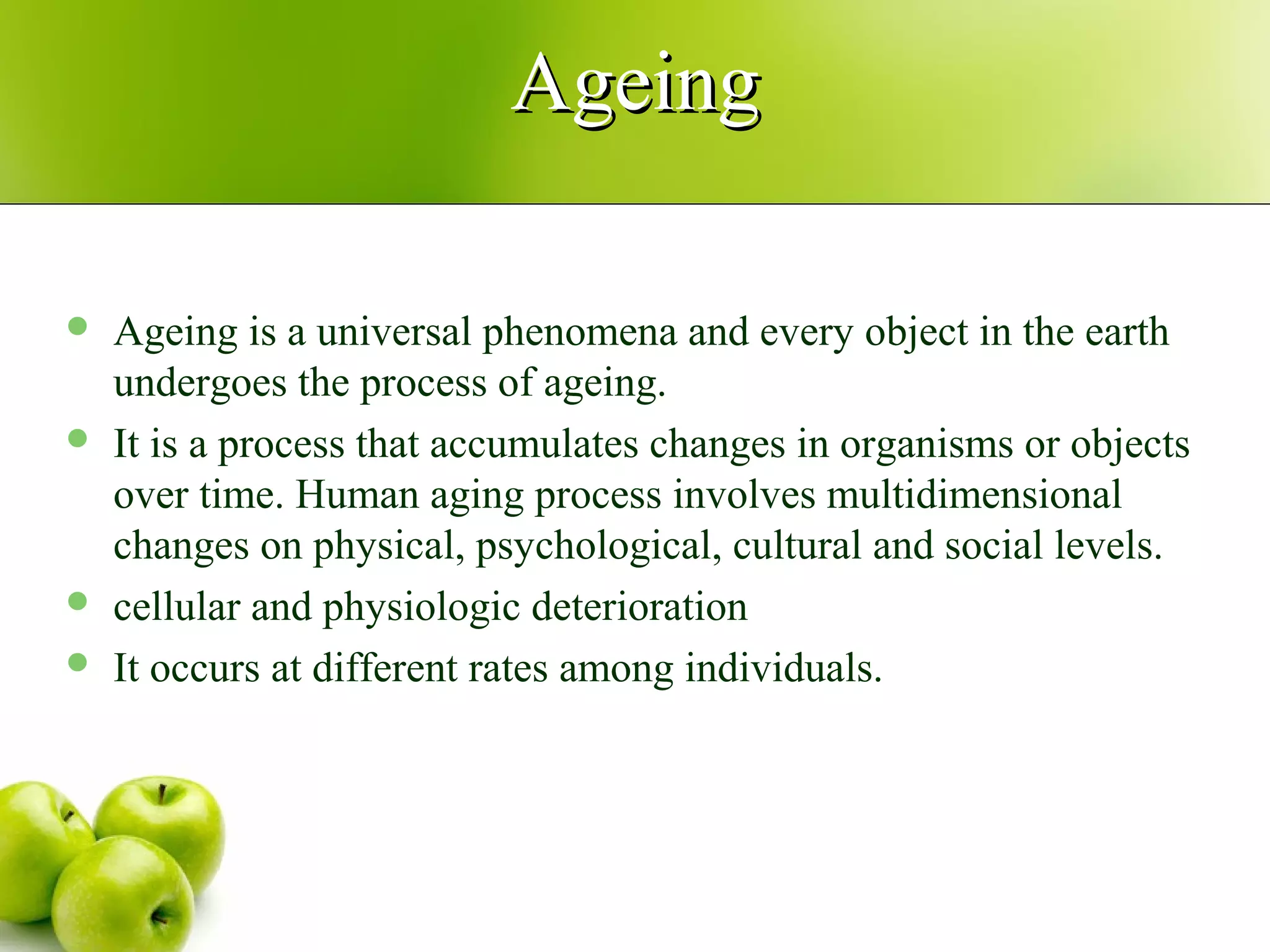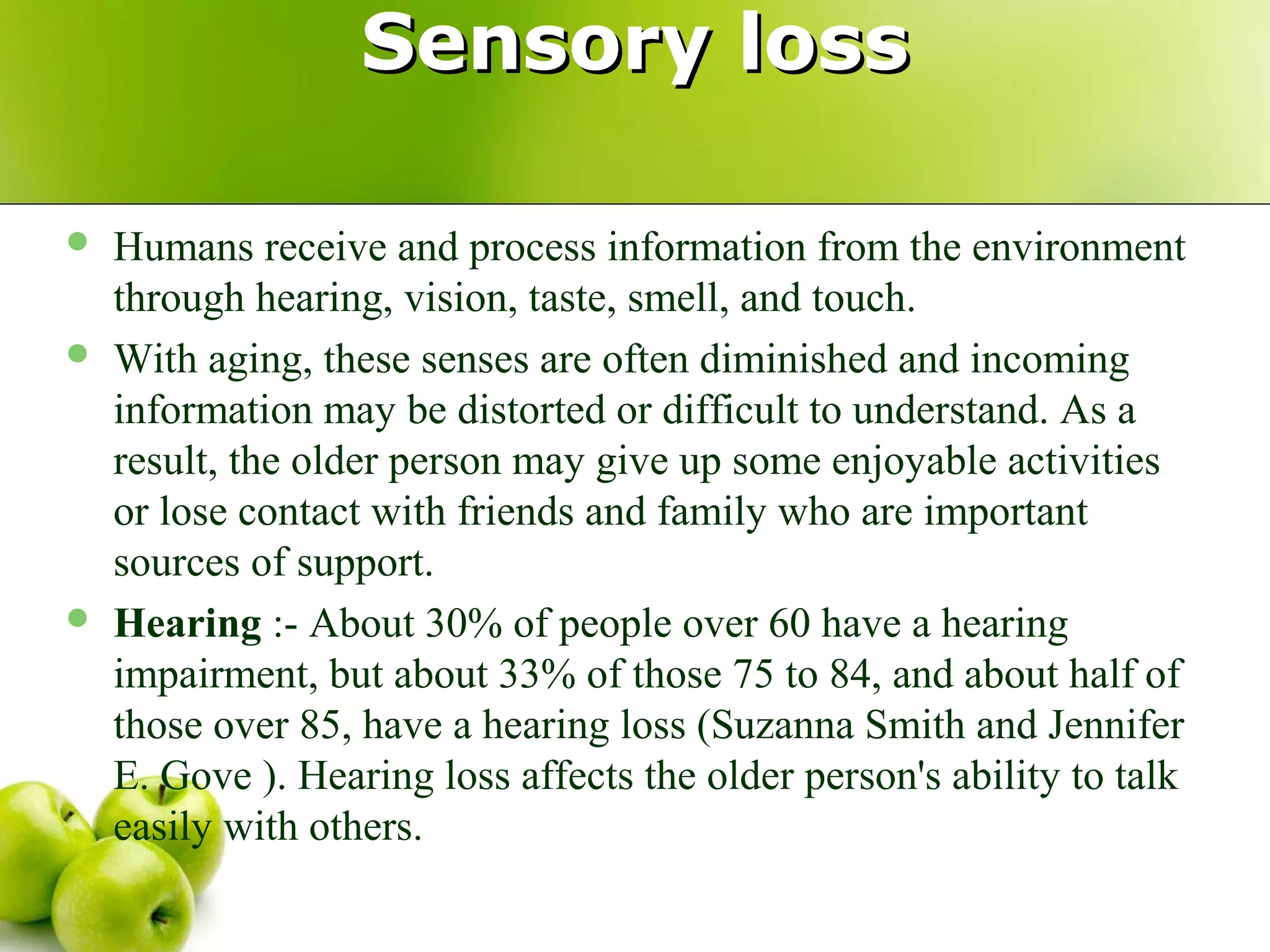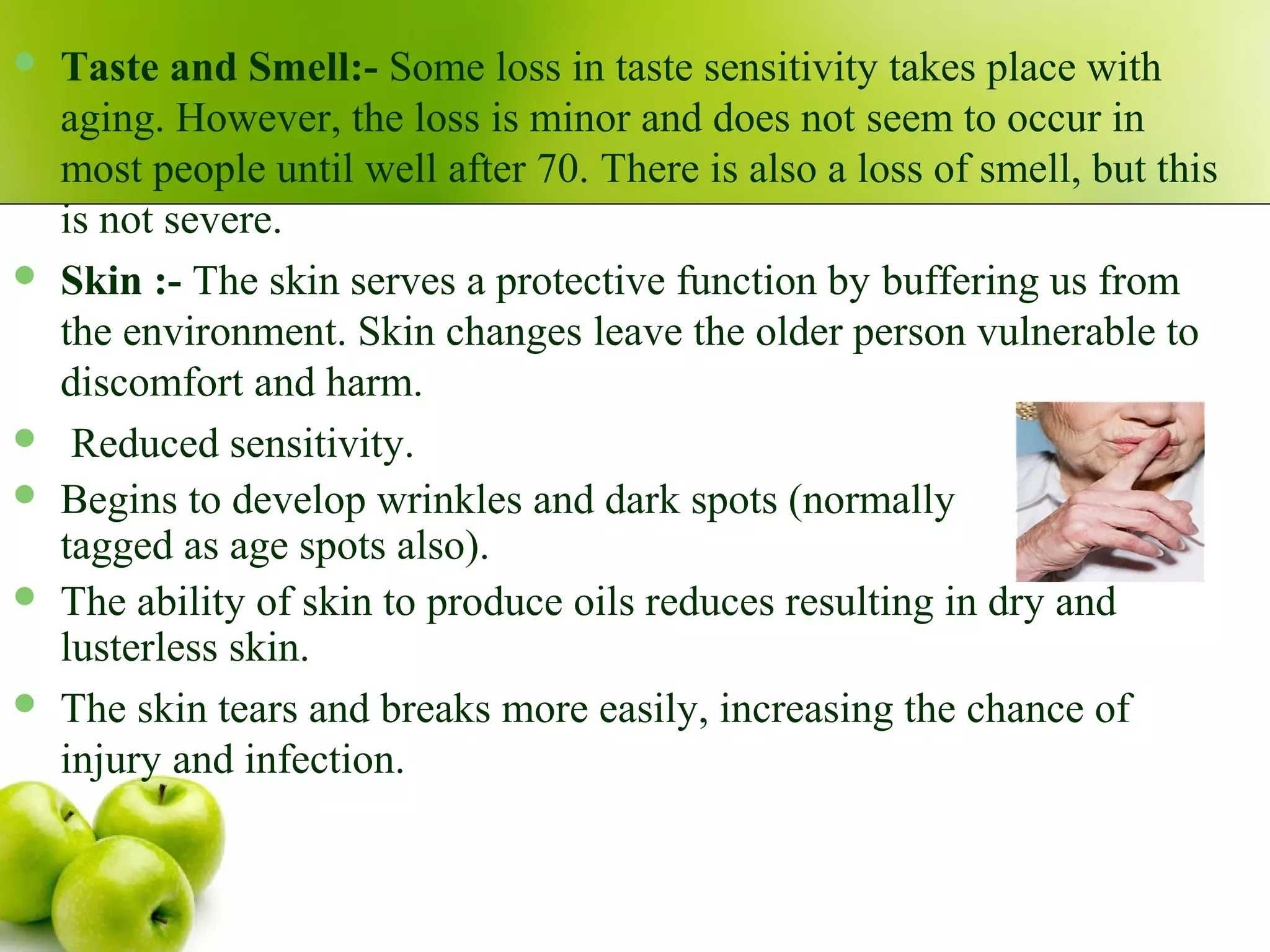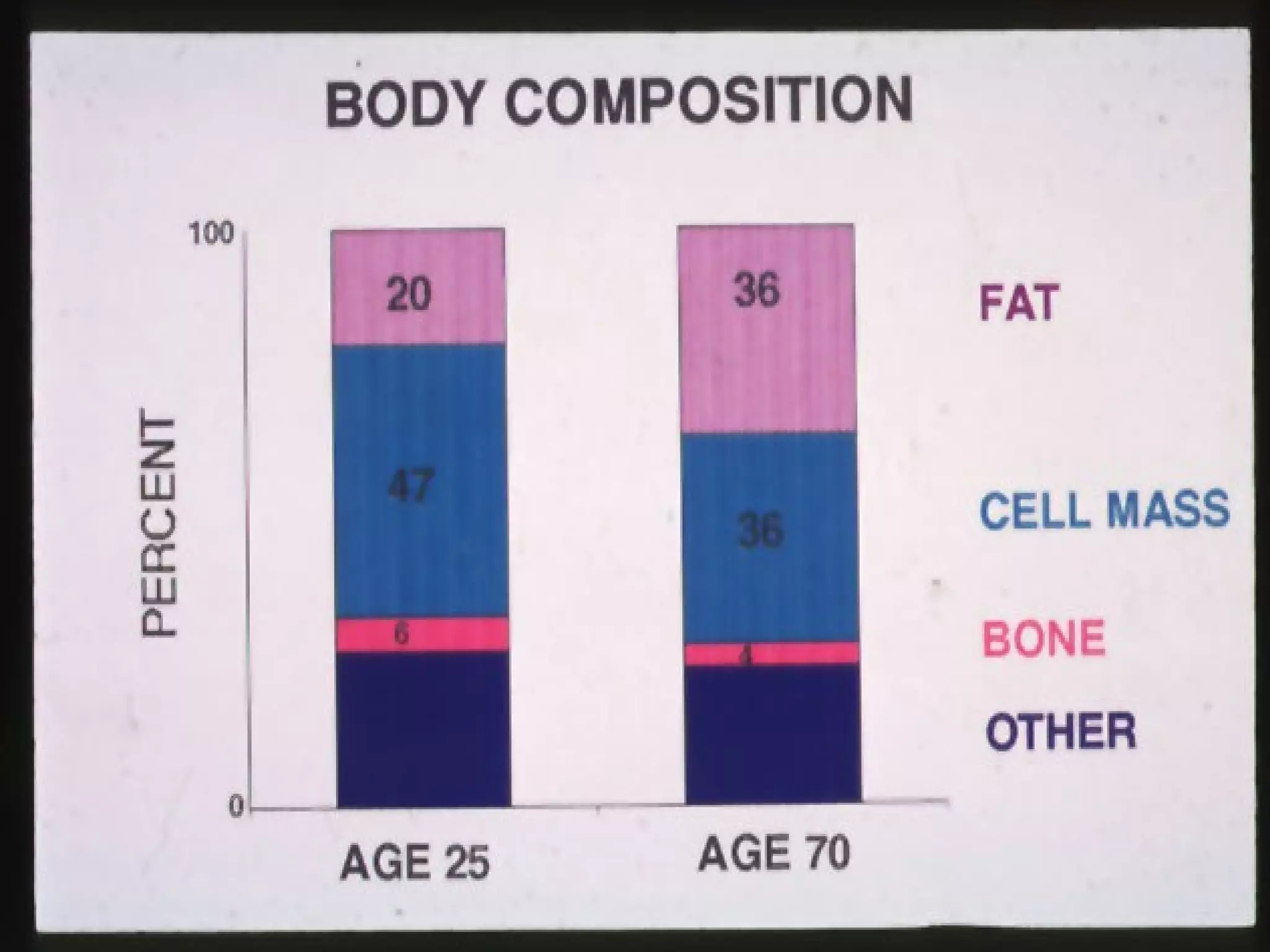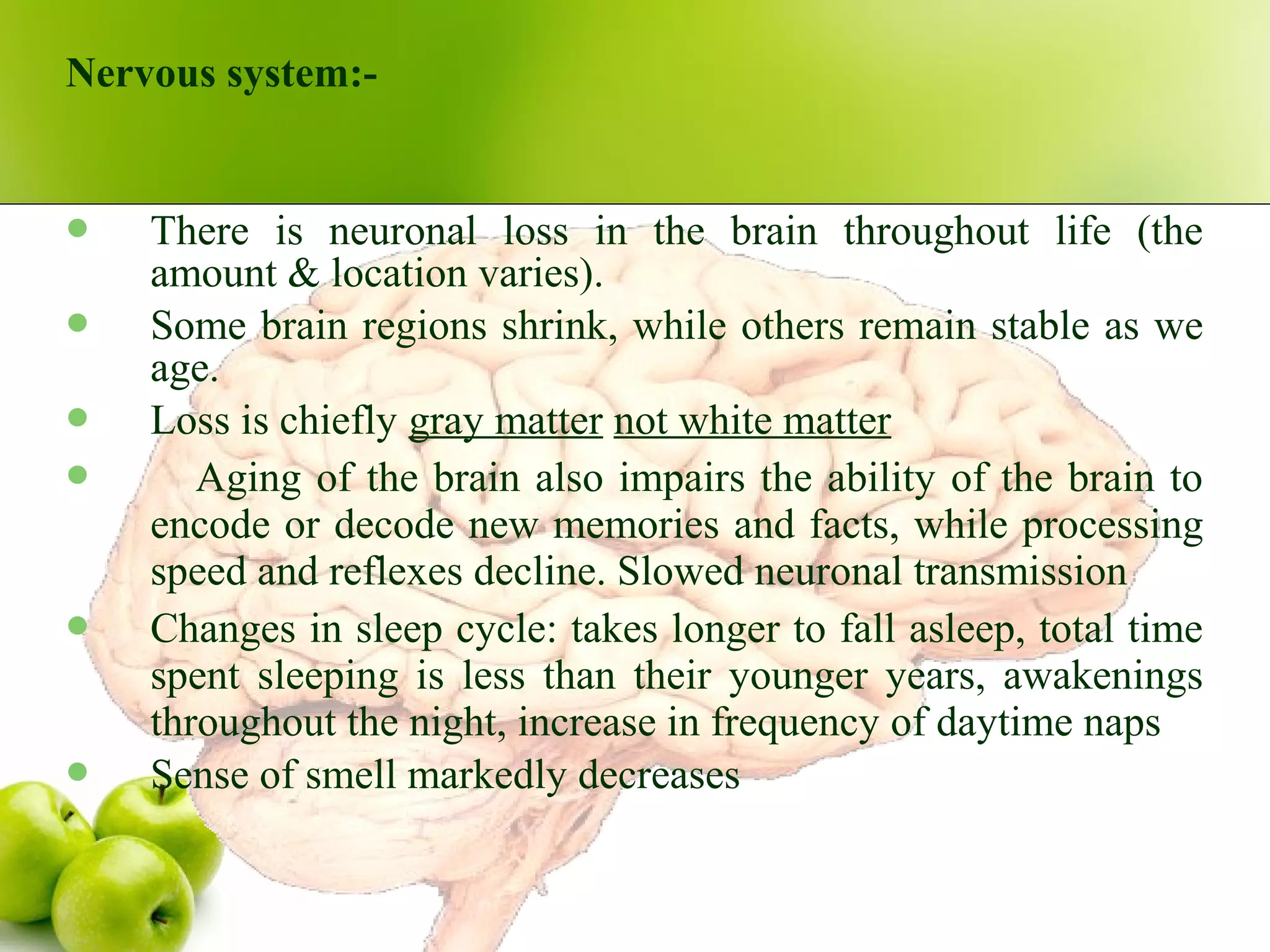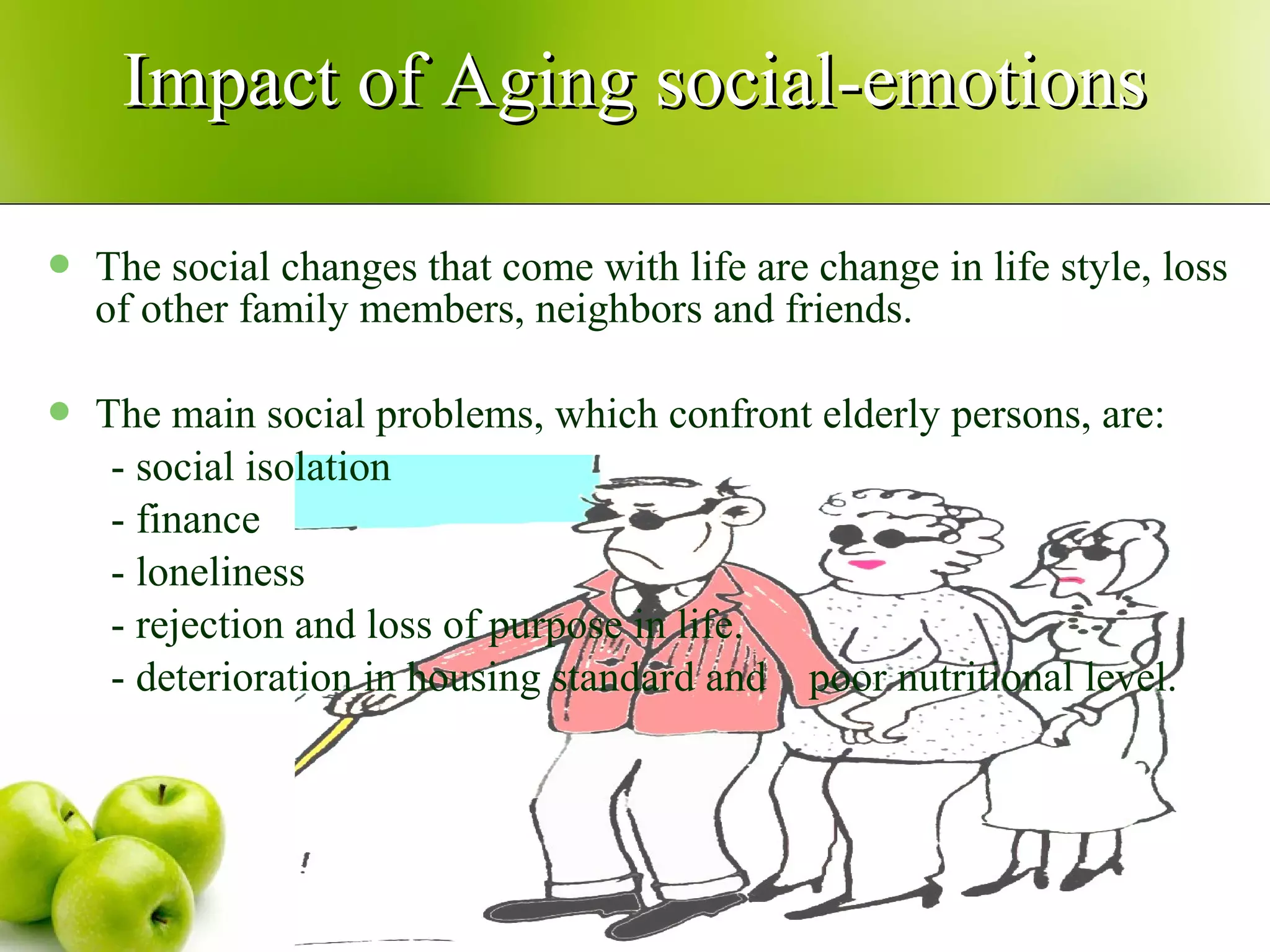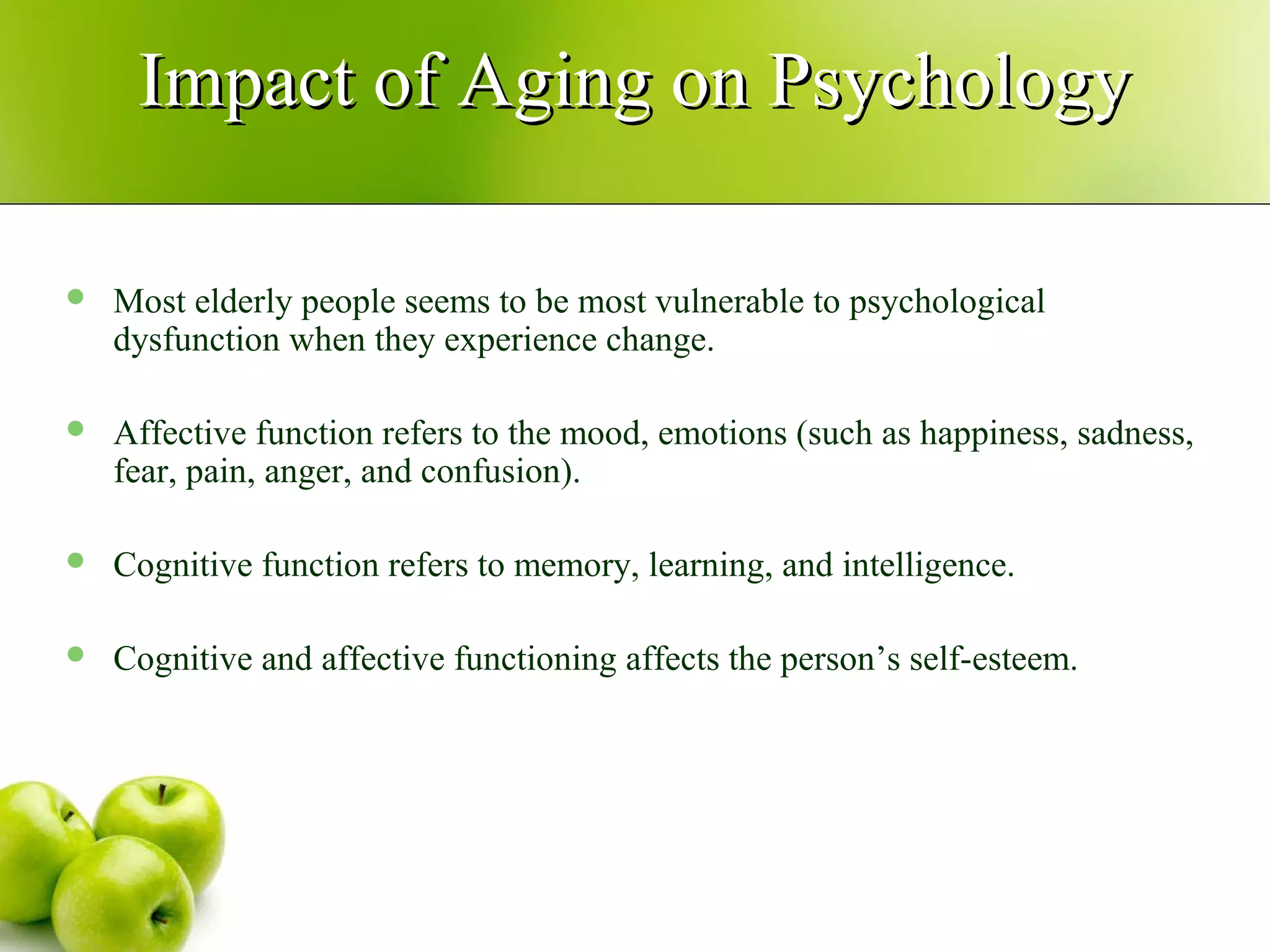Ageing is a universal process that causes multidimensional changes to the human body and mind over time. Physiologically, ageing impacts systems like sensory organs, skin, muscles, bones, heart, kidneys, and reproductive organs, generally causing deterioration. Psychologically, ageing can impact memory, processing speed, and mood. Socially, common challenges of ageing include retirement, loss of friends and family, loneliness, loss of independence and status, and depression.

